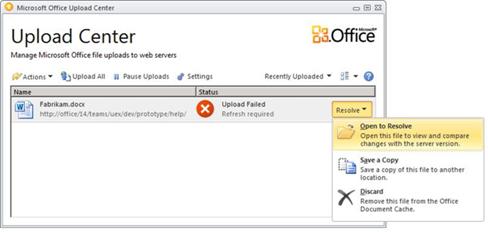

- #How to transfer office 2010 cache file install
- #How to transfer office 2010 cache file 64 Bit
- #How to transfer office 2010 cache file update
- #How to transfer office 2010 cache file full
- #How to transfer office 2010 cache file windows 8.1
Note: For Office 32 bit on 64 Bit Windows look in the Program Files (x86) folders. Office 20 slightly changes the folder that contains ospprearm.exe:\ C:\Program Files\Common Files\Microsoft Office\Office15\ospprearm.exe The command used to rearm Office 2010 is: C:\Program Files\Common Files\Microsoft Shared\OfficeSoftwareProtectionPlatform\ospprearm.exe This will reset any licensing information to allow an image deployment. Therefore, when packaging Office for an image installation as we do with App Layering, the best option is to rearm the office deployment before finalizing. When the first Office application is run for the first time on a desktop it creates a CMID for the application on that desktop that uniquely identifies the application instance for licensing. If you need a smaller set of users to have access to Visio and Project then you must create a second layer for Office, Visio and Project, as described above, and include that on a separate Layered image.Īn alternative to that is to use Visio and Project as published apps on XenApp.

#How to transfer office 2010 cache file update
Running Visio and Project as elastic layers will cause issues with broker sessions or a reconfigure when the applications are run because of the way Office Apps update the windows store. If you’re licensing for Visio and Project allows all your users access then you can create a single layer with all of Office and add it to your image. If your licensing permits it would be better to provide all users all three applications and have just one layer, but that often is not possible.Ĭitrix recommends that the all Office applications be included as part of the layered image. In this case you will have one more layer than if you created the layers separately with prerequisites, but updates will be much easier to perform and you won’t have to worry about always including the correct prerequisites to keep all the layers intact. Office 2010 Standard, Visio 2010, Project 2010.So, if you use Office 2010 Std, Project 2010, and Visio 2010 and some users have Project, some Visio and some both then you would create 4 layers:
#How to transfer office 2010 cache file full
While it is possible to use a layering strategy based on installing the main Office application first and using that as a prerequisite for say Project and Visio etc., we recommend that you create separate layers for each full set of Office apps you will distribute. This recipe covers all versions of Office between Office 2010 and Office 365. Considerations for Non-Persistent Desktop 2.x Click-To-Run Office 365 Specific Directions
#How to transfer office 2010 cache file windows 8.1
Special considerations for Office 2013 and later, on Windows 8.1 and later Step 2 - Create Applications Layers for Office, Visio and Project Step 1 - Update Scripts in Your OS Layer Every setting for Office can be changed through the Microsoft GPO's. The easiest way to manage the actual configuration of Office itself is through the extensive list of GPO's provided by Microsoft Office. It is possible to use a different licensing structure than volume licensing however, it will be more difficult to manage as each license must be activated separately on each desktop. Volume licensing should also be considered a requirement for Office 2007 and earlier. KMS should be considered a requirement for VDI deployments of Office 2010 and higher. User profile installations must be done in the end-user VM while logged in as the user. Note that some Office add-ons, like for Excel, are installed directly in the user profile, so can't be layered. When using add-ons in separate layers, it is recommended to include all previously included add-ons also as prerequisites to ensure that they will work together properly if they will ever be deployed together. If you use Office Add-ons, these should be included in the office layer, but can sometimes be installed in different layers with Office checked as a prerequisite layer during layer creation. If your organization's requirements are more complicated, then there will be more things to keep in mind.
#How to transfer office 2010 cache file install
Microsoft Office is an application that is generally easy to install into a layer, and, if it will be used by itself, there are no complexities other than activation.


 0 kommentar(er)
0 kommentar(er)
